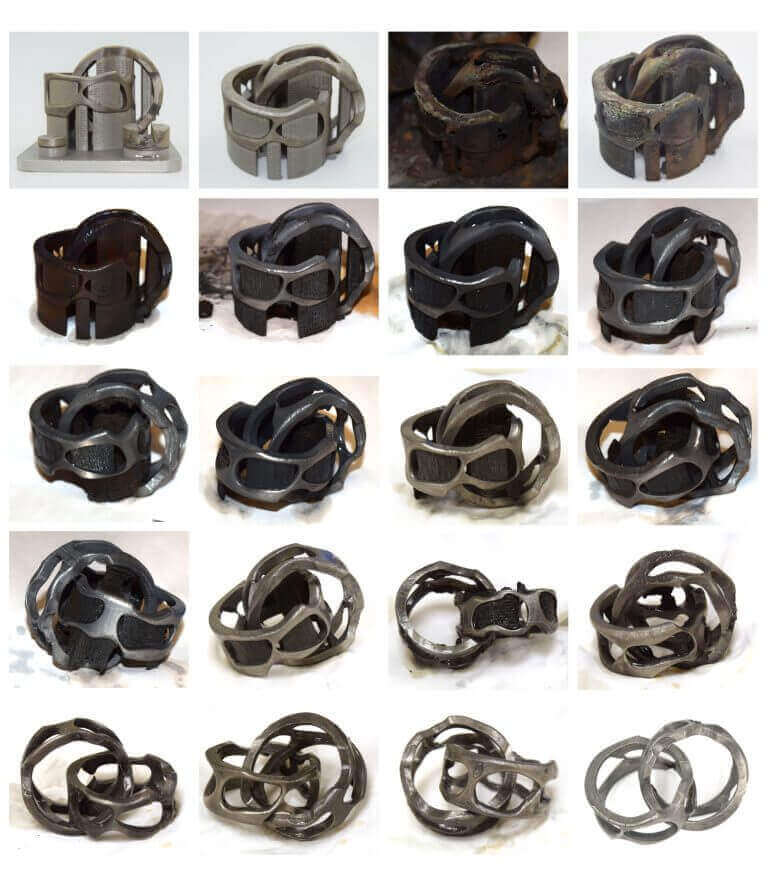Source: Rapid Ready Tech
An assistant professor at Arizona State University has developed a method of printing dissolvable metal support structures. This breakthrough could make end-to-end metal printing faster.
Metal 3D printing is fast on its way to becoming a mainstay option for heavy duty industrial 3D printing. But, it can be a laborious process involving copious amounts of post-processing.
However, an assistant professor of 3D Nanofabrication at Arizona State University (ASU) might have a solution. The man behind this development is Owen Hildreth., who has a mechanical engineering degree and Ph.D. in nanofabrication materials engineering.
However, he didn’t turn his mind to it until dropping in on a talk by visiting professor, Timothy Simpson, who posed: “If anyone knows of a water-soluble metal we could use for metal AM support structures, talk to me afterwards.”
Simpson is a research professor at Pennsylvania State University’s Center for Innovative Materials Processing through Direct Digital Deposition.
He wasn’t expecting Hildreth’s response of: “Well, any metal could be dissolved if you control the local chemical environment — it’s just the oxide surface layer (produced regardless of the specific AM metal technology) that gets in the way.”
Hildreth was sure there was a work-around the oxide surface layer. So, he began testing his theory with Simpson. Their aim was to create a method which could dissolve the supports but leave the printed part whole.
To speed up the process, Hildreth believed using a corrosive solution, instead of a mechanical tool such as wire-EDM equipment, could work. He began developing several tests for his theory.
Testing Hildreth’s Dissolving Supports Theory
He began with a 1 inch stainless steel arch with carbon steel supports, printed on Pennsylvania State University’s Optomec Direct Metal Deposition system. This printer can build metal parts using more than one material, which allowed Hildreth the differentiation to attack only specific parts. In this case, the carbon steel supports.
Hildreth was able to selectively carve away the carbon steel by using a bath of nitric acid solution. By bubbling O2 through this to prompt oxidization and controlling the corrosion with a saturated hydrogen electrode, the method worked well.
However, Hildreth didn’t leave it there. Because many metal 3D printers do not support multiple materials, he then turned to devising a method for remove supports of single material prints.
Hildreth printed a stainless steel cylinder which had a row of 100-micron-diameter supports for two tests. First, he tried “direct dissolution”. This involved a process to leech out the protective chromium carbide from the metal, and thus rendering it susceptible to corrosion. Although this process worked, it did mean that the cylinder itself degrades too, and only got worse the longer it remained in the solution.
The second process involved adding sodium hexacyanoferrate to the leeching process. Because the supports were extremely thin, they were completely sensitized, along with a thin shell of the cylinder. After the dissolution is complete the cylinder is left behind.
After noting the benefits of these processes on a simple print, Hildreth then tested interlocking stainless steel rings. Typically, using traditional machining, breaking the supports from the part would take 32 to 40 hours. However, with this process, it took just seven hours.
Interested in finding out more? Check out 3D Printing and Additive Manufacturing to read all about Hildreth’s discoveries.

License: The text of "Metal 3D Printing is About to Get Faster Thanks to Dissolving Supports" by All3DP is licensed under a Creative Commons Attribution 4.0 International License.